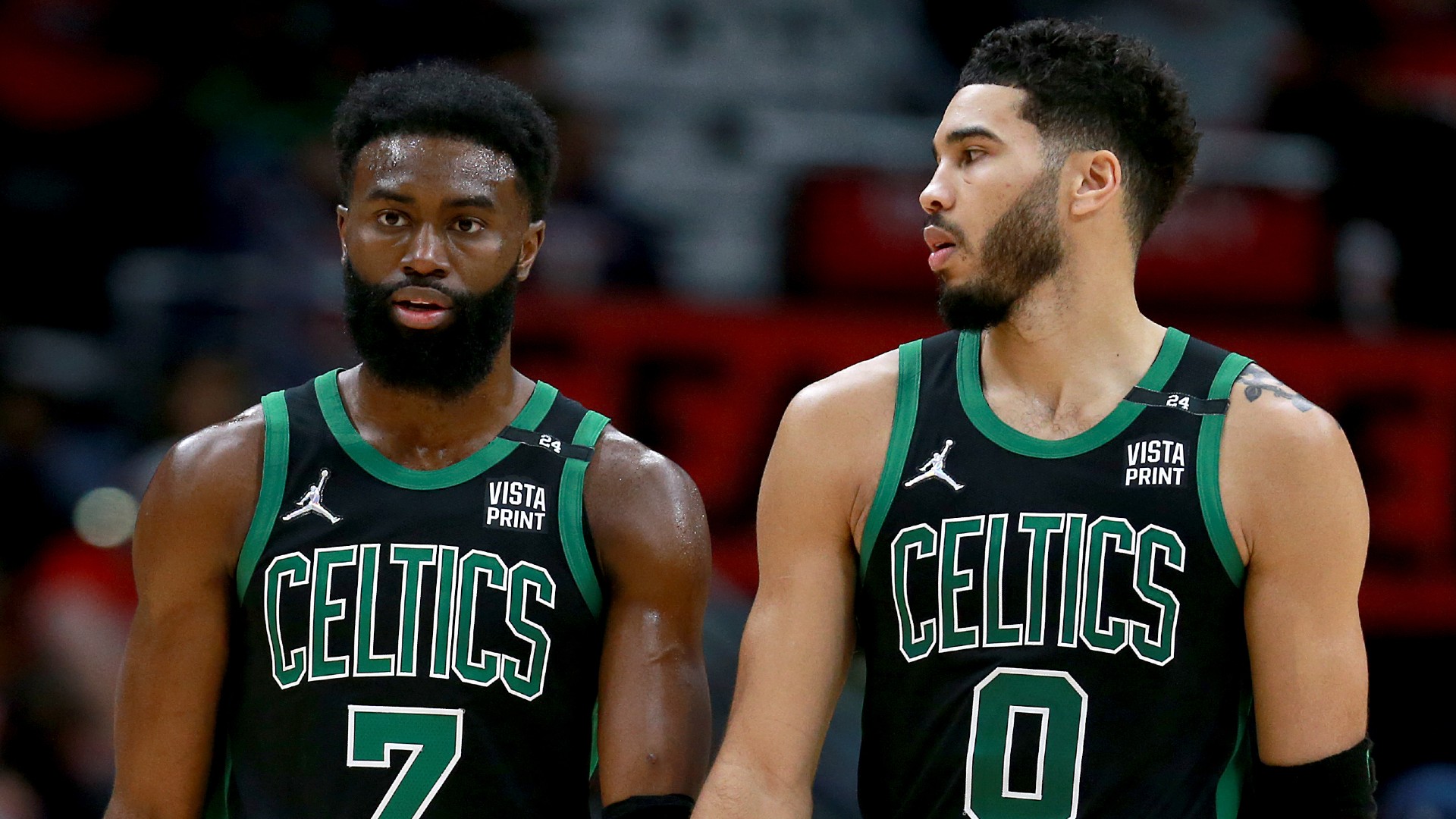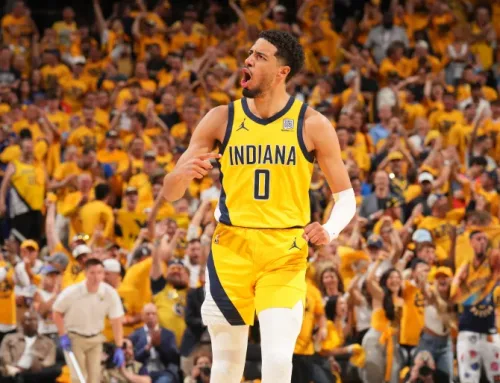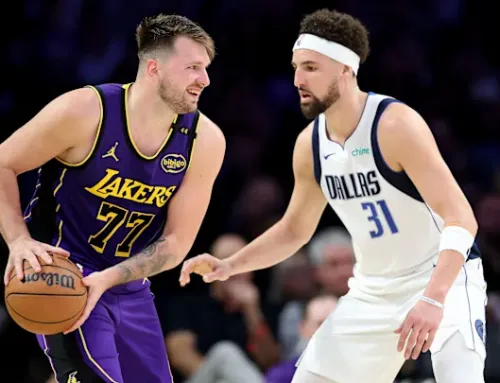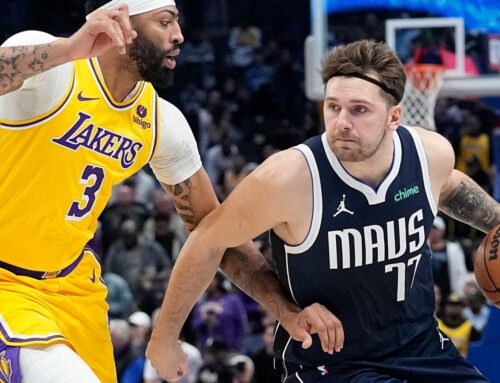A Deep Dive into the Growth of the Celtics
By: Avi Tyagi

(Getty Images)
This piece will follow an interesting format. I will begin by relaying the list of notes I had already written down in preparation for an examination of Bucks-Celtics before the series had even started. As a follow-up, I will then present my thoughts on the Celtics afterwards and add in what adjustments and what significant areas of growth stood out from their outstanding stretch of play. Let’s get started!
Celtics:
What an absurd team. They were squeaking along as a meager 7 seed all the way through the holiday season. All of a sudden, everything clicked. Massive changes were made to their offensive and defensive infrastructure. Rob Will earned cleanup duties, hiding on the least threating perimeter corner threat to sprint back into the play as a secondary rim threat. The rotation narrowed; the rotations grew crisper. Grant Williams took a massive step as a truly viable defender capable of handling switches from time to time and communicating frequently to spot opponent’s set plays. Payton Pritchard finally gained consistent minutes as a bench guard, capable of driving offense for short stints and importantly, providing an excellent catch and shoot option for the roster. A fully heathy Jaylen Brown became an efficient complementary second scorer. The trades they made at the deadline worked to perfection in a three-fold manner. First, the deals brought back players capable of easily transitioning to their preferred playing style, semi-switchable defenders capable of fitting into a sound team scheme predicated on size and speed clogging driving lanes and maintaining strong rotations to gate off the paint from perimeter ball-handlers. The Celtics defense is atypical of almost every other great defense. Tracking data only goes back about 8-9 seasons, and most elite defenses have similar markers. They are typically comprised of perimeter defenders capable of producing bedlam in passing lanes and walling off easy drives, while also typically offering resistance within the domain of opposing bigs. Statistically, here is the criteria:
- The defense holds opponents to attempting 47% or more of their shots outside of 15 feet on at least 1% shooting worse than expected (i.e. establish a strong perimeter so that the big does not need to be tested.)
- The defense allows opponents to attempt less than 43% of their shots within 10 feet of the hoop on at least 1% shooting worse than expected (i.e. if someone does perchance enter the paint, do stop them).
- 14+ deflections per game (be active on the perimeter, getting into passing lanes and providing defensive playmaking).
The only teams to qualify via the criteria: The 2017-18 76ers, the 2019-20 Raptors, Clippers, Celtics, and Lakers, and the 2021-22 Warriors and Suns. Those are relatively loose parameters and yet still difficult to clear, because it involves striking a difficult balance of being active defensively on all fronts without over compromising at the expense of different shots. You might ask: how does that relate to the Celtics. The Celtics miss qualification because they only average 12.3 deflections per game, a bottom 5 mark despite employing Marcus Smart. Outside of Smart, their defense just does not play-make with active hands in the same way. The Celtics just don’t break their defensive shell at all. Teams may be able to pass the ball around them, but that typically does not net any extra advantages. In the regular season, Celtics’ opponents only managed to attempt 40.3% of their shots within 10 feet of the hoop, and had to attempt 50.8% of their shots from 15+ feet from the basket. Those are solid figures, characteristic of a quality defensive shot profile, but that’s not the mind-boggling aspect of their defense. Here’s the astounding part, opponents are shooting 4.0% worse than expected in the 10 feet radius zone and 1.4% worse than expected on shots 15+ feet away. No team in the tracking data has managed even 3.5% and 1% respectively in those regions, much less the actual figures. It’s a testament to the interconnectedness of the coaching staff and of the unit as a whole. That ties into the second component of their midseason trades: the rotation. They’ve shortened the rotation to a 9-player pool, with 6 strong defenders amongst that group. Most teams cannot compete with that sort of top to bottom, per-play, defensive excellence, and, additionally, Grant Williams and Theis have improved on that end throughout the season.
The most important changes may be the most underrated. The Celtics had the 21st ranked offense by Cleaning the Glass through the middle of January, scoring 109.9 points per 100 possessions. At that point, they became an offensive juggernaut. Place your cup of tea to the side, and listen to this. Their offensive rating since that point: 119.8 points per possession, best in the league. The schedule may have eased up as teams began differentiating from each other, but to combine the best offense over that stretch, with the season-long best defense is still absurd. That’s where their new rotation once again steps in. The offensive holes that were opened up by the trades were filled somewhat by the new additions, but it’s Tatum and Smart who have really increased their portions of the pie. Tatum’s offensive load has grown 4% and Smart’s has grown 10% since the trade deadline. For Tatum, that change is primarily a reflection of increased comfort as a roll-man passer to open up easier opportunities for the offense. It doesn’t hurt that he also has a 64% true shooting percentage despite that 50% offensive load over that stretch. It’s Smart that has the more complex and interesting story here. Midseason Smart was a secondary figure within the offense, shunted to the side with limited on-ball distribution opportunities. After an improved two-month stretch last season, his efficiency slingshot back below career norms. Going into Christmas, he had a putrid 49.8% true shooting mark. Since then, the tables have turned. He has a 57.4% true shooting percentage, driven by easier shots with defenses so predisposed to watching Tatum or Brown. The extra primary reps he’s earned have been a boon to his ability to create for others. Since the turn of the calendar, Smart has been averaging 10 assists per 100 possessions, compared to 7.6 before then. Many of those are through quickly deciphering actions to find cutting wings or big men, but it can also be attributed to the continual growth of Smart’s closeout attacking game. Smart historically averages around 6 drives a game, often as ambitious efforts. At the start of the season, in order to fit in with the offense, Smart tried remaking his game as a slasher, averaging 10 drives a contest. While he was individually efficient on those attempts when he managed to bypass his defender, stalled drives did not create easy assists for teammates and took up the spaces other teammates thrived in. Since then, Smart has scaled back a notch, attempting only 7.6 drives per game and shifting to acting as a catch and shoot 3-point option. That becomes infinitely more tenable when your 3-point % jumps from 28.1% around the holidays to 36.7% since then. The improvements Smart, Tatum, and Brown have made as passers have also changed Horford’s profile. His offensive volume has been cut, as his role as a hub has become more of a luxury than the necessity it was previously. With easier attempts, a more-spaced out floor due to Smart’s sudden shooting prowess, and a more cleared out lane have unlocked a smaller role, efficient version of Al Horford. Since mid-January, his true shooting percentage has also jumped from 54.2% to 61.9%, partially due to hitting 37.5% of his 3s versus 28.9% before, even if the volume is low. The open space and creators around him have also presented more opportunities within the restricted area, bumping it from 19.2% of his profile to 24.8%. In short, the Celtics clarified their team roles, made changes to their team scheme, and mostly everyone caught on fire from 3. Even their transition play, the one aspect of their game which they didn’t lead the league in (likely due to a short rotation and the preferences of their personnel) took a major leap in the playoffs. With dynamic defensive play leading to open fast-break opportunities, the Celtics went from 28th in the league in transition points in the regular season to 3rd in the league in the playoffs. Their 7-point jump (from 16.8 to 23.8) is the singular biggest leap between the regular season and playoffs in the 7-season stretch of transition points tracking data, and is a primary factor for the sweep of KD and the Nets. That’s the team the Bucks have to face right now.
Bucks: The regular season Bucks have secretly been no slouches themselves offensively the last few years. In fact, here’s another unexpected factoid. Here is the list of teams that score an above average amount of points from pull-ups, an above average amount of catch and shoots shots on at least league-average true shooting, who generate an above average amount of restricted area made shots on at least 2% efficiency above league average (above-average equals at least 0.5 above league average):
The 2013-14 Spurs, 2014-15 Warriors, 2015-16 Warriors and Cavs, 2016-17 Warriors and Cavs, 2017-18 Warriors, 2020-21 Nets and Bucks, and the 2021-22 Bucks. That’s the entire list. Some of the best teams of the last few years, including the two rivals of one of the most memorable series from last season. To beat the Bucks last year in the absence of any revolutionary defenses required an offense of a comparable caliber. This year’s Bucks may have improved offensively on several fronts. The Bucks playoff performances have often come under scrutiny due to one of the reasons that they built those expectations in the first place. Since the boom of pace and transition offenses in the last 4 seasons, here are the list of teams to score, on average, at least 6 more points per game in transition than their opponents: the 2018-19 Bucks, Raptors, Thunder, and League-Pass phenom 2018-19 Kings (that’s their full name, what can I say, the 2019-20 Raptors and Bucks, 2020-21 Bucks, and 2021-22 Bucks and Grizzlies. You might notice a theme. As the intensity picks up in post-season play and opponents become more focused and decisive about stopping fast-breaks, these teams tend to lose one of the aces they had previously pocketed and stored up their sleeve to build the foundation of their success in the first place. In the 18-19 season, as the league took a leap in offensive pace and several teams separated themselves from the pack, the Bucks scored 12.1 more points on average per game than their opponents in transition. Considering that an average transition possession is about 30% more productive than a corresponding half-court possession, that’s a massive boost over the course of a season. It’s a testament to the players and coaching staff of the Bucks to maintain this advantage for 4 seasons, yet it also indicates why their offense appears so much more stagnant at times in the playoffs. Here is the good news: They’ve played phenomenally in the last 3 games of the last series. Oftentimes, at full strength, the Bucks appear confused on a given possession by the number of quality options they have. That indecisiveness carries into their passing, and their shot quality becomes an issue. After Middleton’s injury, it was easy to become somewhat concerned about their offense; instead, they simply leaned into simplicity. Giannis and Jrue have become the two-star system around which the entire operation functions. To surround them, the Bucks have a variety of catch and shoot options, and the new Portis-Giannis-Lopez frontline has shown some potential. With that grouping, Giannis has been allowed to hide as a roamer on the least threatening opposing player, following the trend brought about by Mobley, Rob Will, and Jaren Jackson. Giannis as a roamer when one of Jrue or Wes Matthews is already crowding scoring options at the point of attack is a devastating force. Offensively, I’ve already sang songs about the improvement in Jrue’s game and his continued growth as a pullup (shifting from 36% of his shot profile to 43% while maintaining a 57% effective field goal percentage) has complemented the new Giannis midrange perfectly. The defensive numbers for this team are all down from previous years, but with Giannis having to masquerade as a center for most of it (due to Lopez missing matches), it makes sense why. The other note: The Bucks have always been notorious for giving up 3s. The Celtics roster is not equipped with many high-volume marksmen. Tatum and Brown sure, but aside from that, only Payton Pritchard attempts more than 8 3s per 100 possessions. Most of their 3-point options have solid percentages, but are often reticent to hoist up those shots. With improvements in the games of their two best stars, and a unique defensive style that might matches up acceptably against the Celtics, this matchup might still be a jump ball that can land favorably for the Bucks.
After the series: It turns out Grant Williams is ready for prime time. Al Horford is owed many apologies from me, after I erroneously questioned whether or not he would be a part of their closing 5 come playoff time. It feels almost reductive to say that the difference in this series came down to massive defensive performances and occasional offenses showcases from those two versus a Bucks squad that desperately needed the playmaking of Khris Middleton but here we are. For the Bucks, there’s a chance the following 5 statements are all true:
A healthy version of this team (with Bembry and Middleton) is better than the team from last season.
A healthy version of this team might still have lost to a fully healthy Celtics lineup with Rob Will (especially considering the point differential in each of the losses).
The coaching staff and strategy applied by the coaching staff this season to maximize the Portis center lineups, spread the floor on offense, master entry passes to Giannis, and improve at attacking slower footed opponents laterally are all massive areas of growth achieved by the team that points to a positive future playoff outlook with fewer perplexing offensive performances.
As more and more teams seek to emulate the Celtics, Mavericks, and Clippers 5-out model, protect the paint at all costs (if it means wide-open 3s), will become even less viable in high-level playoff settings.
Seeding might help in a tight series against a strong playoff rival and many of the front office decisions, such as trading Donte without receiving players who were prominent parts of the rotation, or letting P.J Tucker walk (over some of their other options at the time) might necessitate a trip for the personnel department to revisiting aspects of their strategical approach.
This series was a true gladiator showdown, the sort of clash that drives the trailer of any giant action or sci-fi blockbuster. Horford, Smart, and Grant Williams defended an improved Giannis individually about as well as could be possible. Giannis has taken such massive leaps in his development, (specifically with his footwork, agility to step around defenders, his jumper, and his playmaking) that I’m not sure if any of his previous opponents in playoffs past could have stopped this evolved version of his game. The Celtics somehow had 3 defenders with the build, tenacity, discipline, and communication to conceivably spend possessions matched up with Giannis mano e mano and not need immediate help to allow for open swing passes and get the Bucks offense churning. As such, the Celtics were able to outplay the Bucks on the whole in the entirety of the series, and the growth of Smart as a passer meant the Celtics had at least 3 quality initiators of offense in every match. Combining the excellent spacing that surrounds the trio of Smart and Jays at all times with a defense that has nary a weak spot to attack nets a team that has performed admirably, even compared to the lofty expectations I had for them going into this series. An initial Heat-Celtics preview summary: It will be interesting to see what the Heat can muster up to counter them. Miami will likely have more options on the perimeter to contain the Celtics’ dribble drive and likely has the personnel to play with more defensive adjustability to keep the wraps on the Celtics’ low usage corner spacers. Offensively, I have no idea what the Heat are going to manage that the Bucks did not already try with Giannis and Jrue. Even their spacing is not necessarily far improved from that of the Bucks when Herro or Robinson is not on the floor, and those two might be targeted by Tatum and the Celtics in a similar mold to the way Grayson Allen was. Max Strus, one of my pre-playoff X factors, might need to have a mega-series. Otherwise, this might be another obstacle in the path of a juggernaut Celtics group that has been dominant despite not yet unlocking Derrick White’s offensive arsenal and with a Rob Will return imminent.




